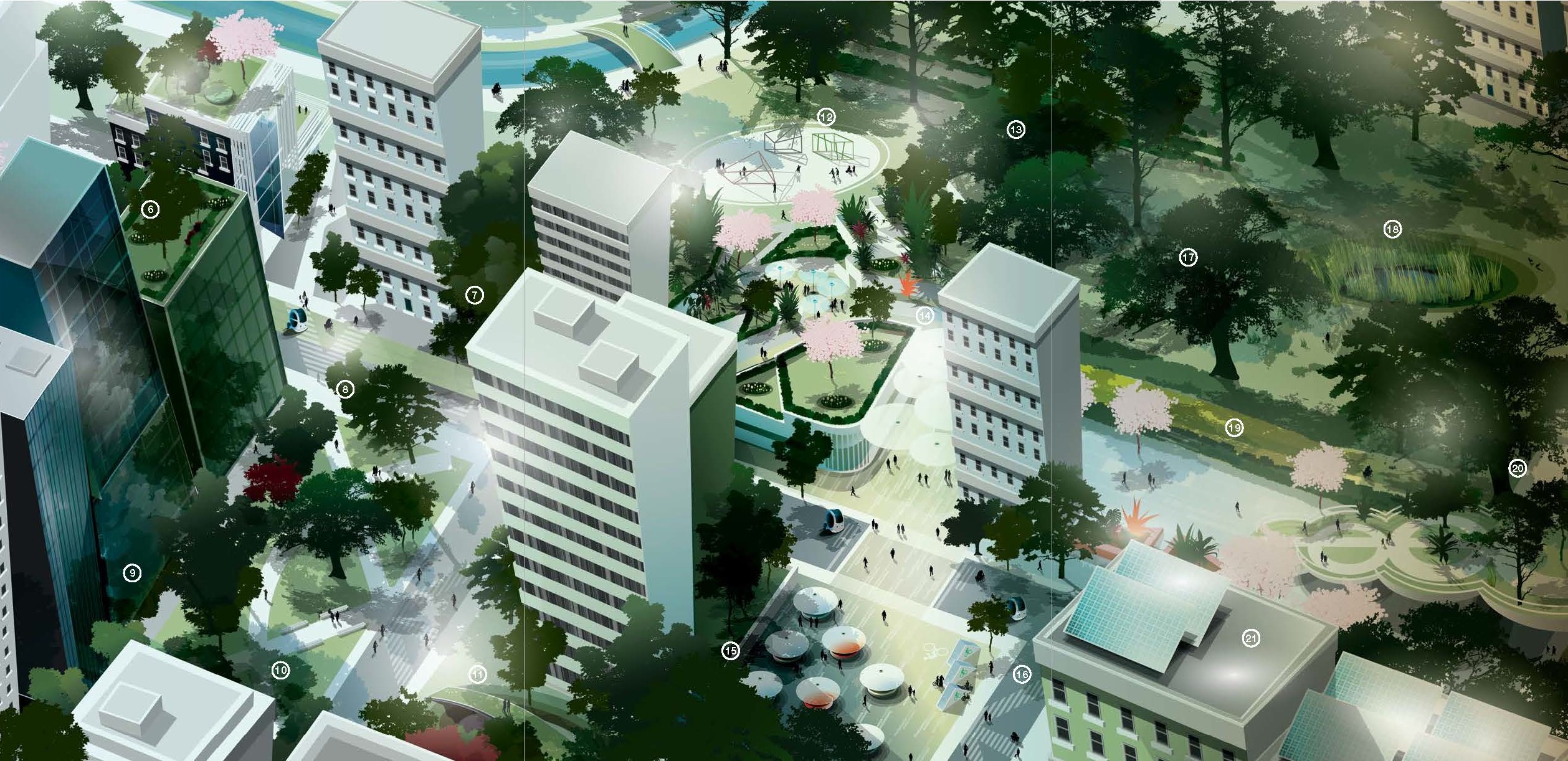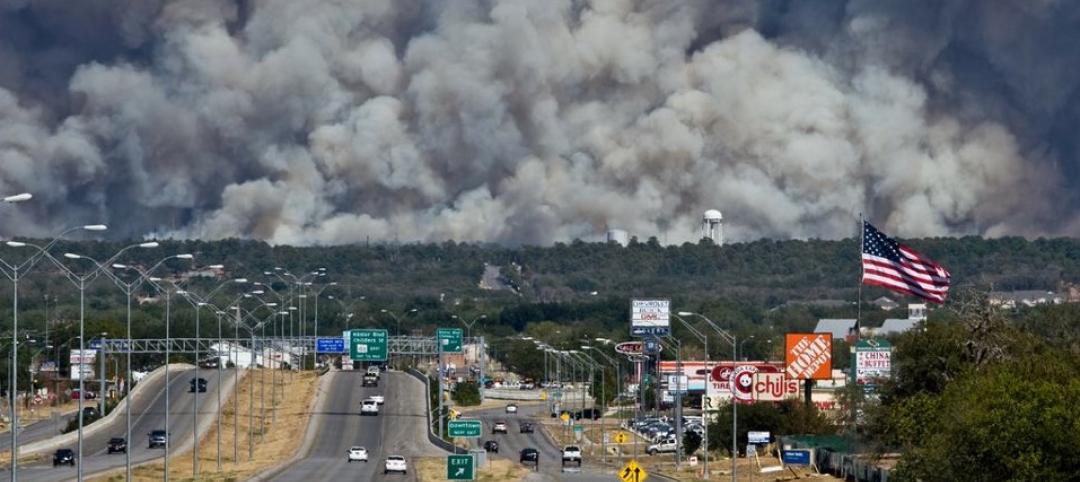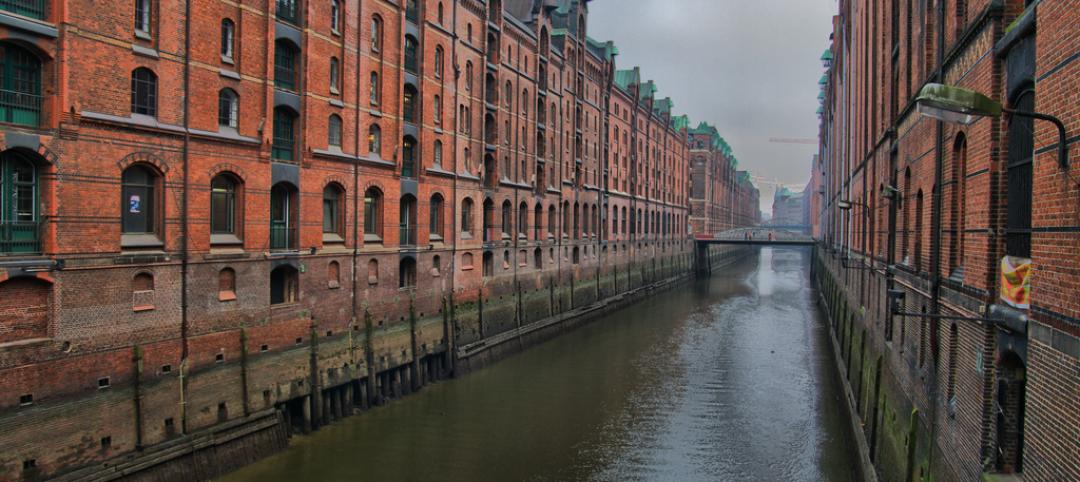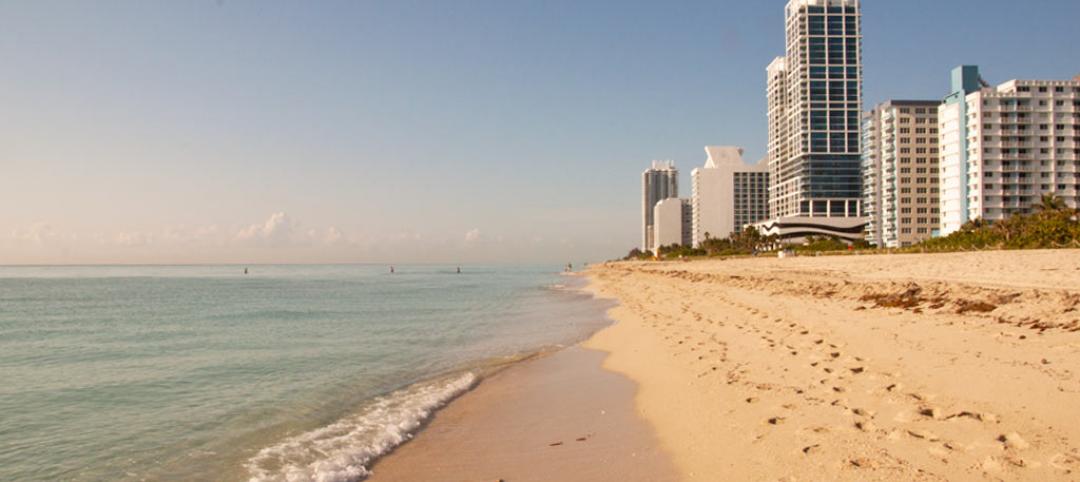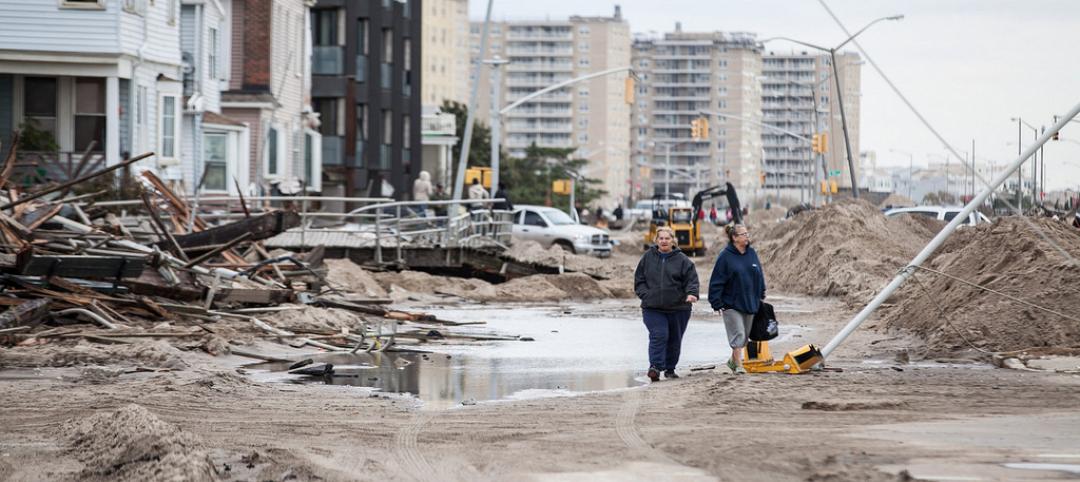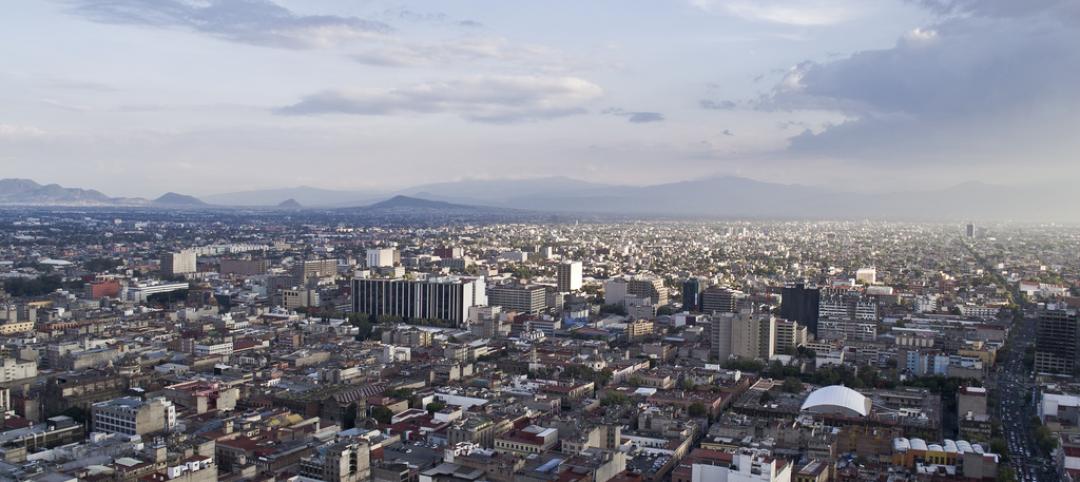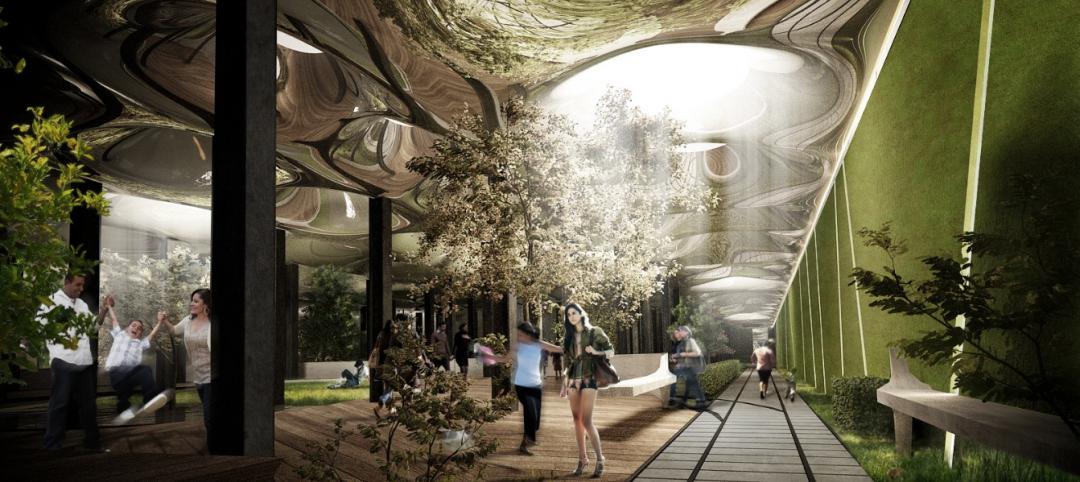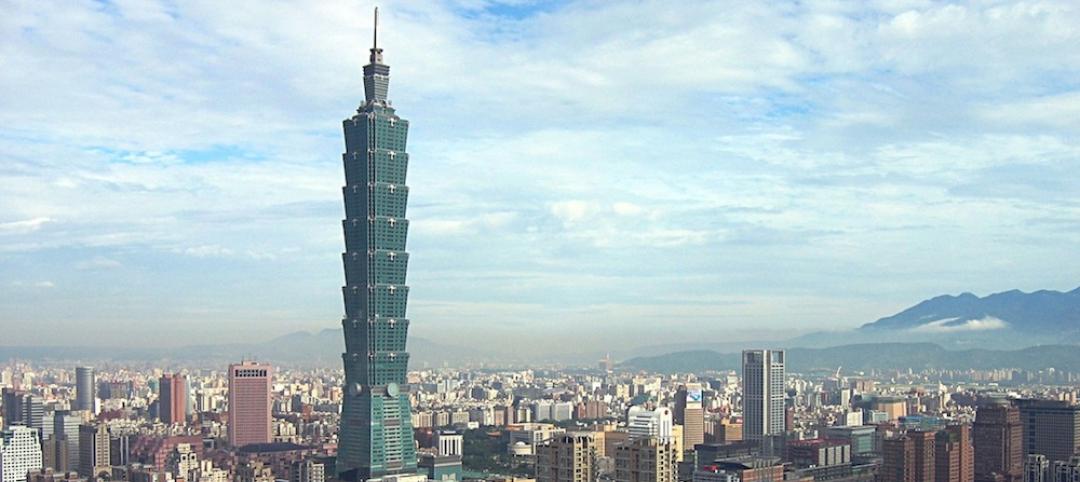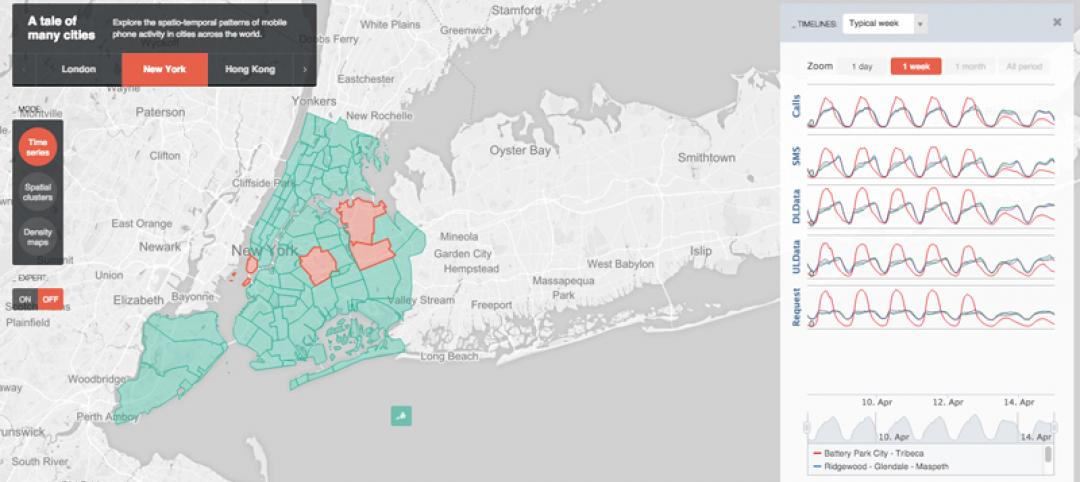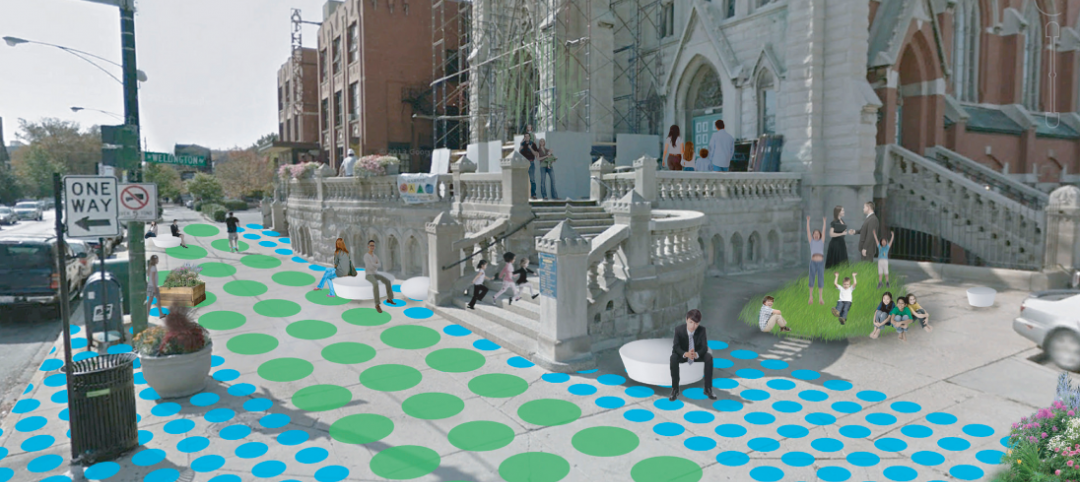A new report by engineering giant Arup analyzes current research and trends about green space in cities and how it can benefit urban communities socially, economically, and environmentally.
Cities Alive draws evidence from cities all over the world of how public spaces of all types can affect the security, happiness, and social life of residents.
The report is divided into three categories—social benefits, environmental benefits, and economic benefits—and details more than two dozen green infrastructure tactics, including underground roads, automated transport, permeable pavements, water roofs, vertical farming, and even glowing trees (see illustration below for a complete list).
Social Benefits: Rethinking Urban Communities
Safer driving — City trees can enhance traffic calming, the report says. Tall trees make streets seem narrower, which makes driver slow down. Meanwhile, close spacing of trees creates the illusion of speed, causing the same slowing effect.
Psychological benefits — Research cited in the report suggests that people are calmer and happier when they can experience nature on a daily basis. "Even passive interaction with nature—simply being able to see a tree through a window—is enough to lower stress and blood pressure," Cities Alive says.
Lower crime — Research cited in the report reflects a trend of lower crime rates in communities where vacant lots are turned into green spaces, as opposed to communities where these lots remain vacant and undeveloped.
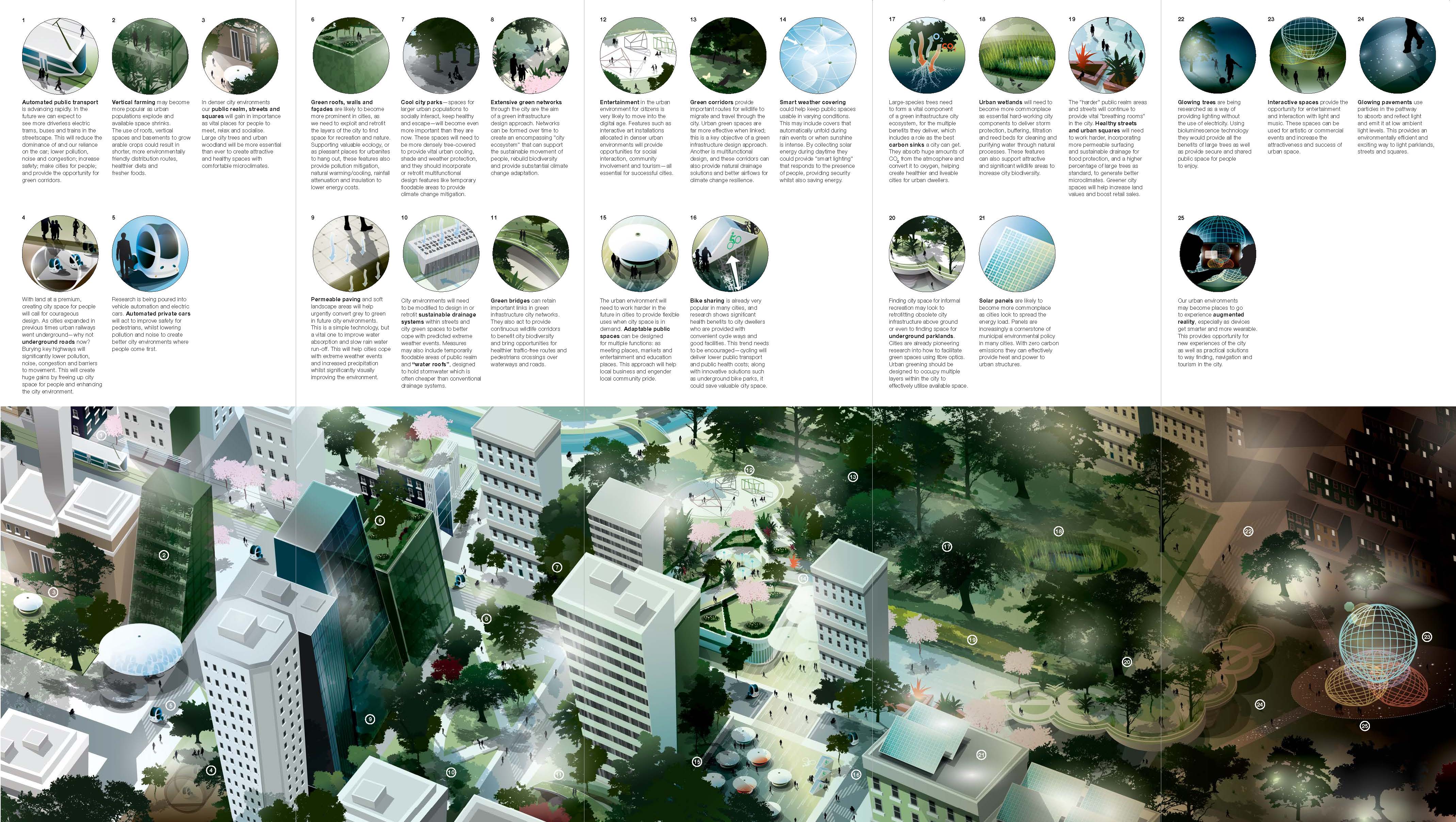
The report details 25 tactics cities can employ to improve their green infrastructure. Illustration: Arup's Cities Alive report. CLICK IMAGE TO ENLARGE
Better community social life — The more effective the design of the community, the more residents can build a tradition of social interaction in its spaces.
Space with an identity — Removing public spaces seems to be a factor in recent political unrest, and these spaces can foster protest communities and encourage democratic involvement: "...the wave of unrest that gripped Turkey in early 2013 began as a result of government policy decisions to remove and develop on top of public parks, particularly centred on Gezi Park in Istanbul. Here the green space became a place for a unique and empowered community to evolve and a place for them to call their own, much like the parallel Tahrir Square in Egypt or Zucotti Park in New York acting as the centre of the global Occupy movement."
Green space can encourage feelings of security — Research from the University of Illinois showed that people who have daily contact with nature, specifically trees, had stronger relationships with their communities and experienced 52% less crime than those without that daily dose of green.
Thoughtful planning can revitalize urban shopping spaces — "Studies have shown that well-planned rebranding of urban shopping spaces can increase commercial trading by up to 40%."
Green space can increase productivity — When an office has a view of green space, the report says, people in those offices may take as much as a quarter less time off as opposed to people without a view of green space.
Environmental Benefits: Smart and Resilient Environments
Coping with increased rainfall — With climate change causing more rainfall in many places, municipalities need to come up with more effective stormwater drainage systems. There are examples of this occurring already, in Portland, Ore., and other places.
Better urban planning in the face of climate change — Flooding is now a bigger issue in urban areas than ever. As a result, "new urban planning models suggest that where appropriate, space should be allocated for water-sensitive urban design (WSUD), and features such as new water bodies, reed beds, and areas of ground percolation can also be designed for buffering, water filtration, and drainage. These types of integrated GI solutions can create attractive new natural features in the city environment while also offering climate change adaptation."
Urban planners may need to begin maximizing data sharing in public spaces — Data may begin to add another layer of entertainment in public spaces—people may gather to watch movies or play video games together, just as they gather now for concerts or parades.
Virtual environments may become a reality — Where space is simply too limited to create green areas, projects like Yanko Design’s D’Nature modular digital greenspace may act as a supplement to existing greenery.
Geographical Information Science (GIS) can allow for smarter urban planning — From the report: "GIS uses overlays of different factors of a landscape to calculate optimized layouts for a variety of land uses, from agriculture to ecological potential, calculating best travel routes and the potential for alternative future applications for the space."
Biodiversity is necessary to the health of the planet — Not only is biodiversity necessary to ecological health, the report says, but it "is a great indicator of the ideology of a development. It can be a gateway to other green techniques and technologies that can help to sustain the urban ecosystem as a whole."
Designers should use the different layers of the city to allow as much green space as possible — By exploiting space such as that on roofs, balconies, and walls, designers can work within dense urban environments without destroying what little nature still remains. The High Line in New York City is cited as an example of this.
Economic Benefits: Urban Resource Streams
Vertical farming may be able to address global food shortages — Vertical farming is the idea of containing food production, harvesting of green energy, and a closed feed system with limited distribution and transportation requirements. This creates a minimal carbon footprint and means that the 'farm' can merge with the existing urban structure.
The Biophylia Hypothesis and Urban Food Supplies — From the report: "Proponents of the Biophilic City maintain that better education about the possibilities of urban foraging and guidelines promoting wild vegetation for human wellbeing may lead to a revolution in the way people interact with the city, introducing a new, wild urban consumer ecosystem into which urbanites are fully integrated."
Making urban spaces healthier, quieter, and more beautiful — Tearing down highways and buildings to reclaim waterfronts and parklands is possible and an important way to improve the quality of life in cities.
Movement toward locally sourced, traditional materials — Both the desires of reducing carbon footprints and creating more authentic spaces has led many architects and designers to seek out locally-sourced construction materials.
Integrating living ecosystems into the city — Incorporating more trees into urban landscapes can assist with heat, pollution, and air quality, as well as reducing energy bills by decreasing the need for air conditioning.
New green construction materials can help make cities more sustainable — For example, 'green concrete' that absorbs carbon from the surrounding environment and stores thermal energy is being researched.
Related Stories
Smart Buildings | Dec 1, 2015
LEED Steering Committee approves resiliency pilot credits
Three credits address planning, design, and survivability.
Smart Buildings | Nov 30, 2015
New neighborhoods in Hamburg, Germany resilient to flooding, carbon neutral
Mixed-use areas built on brownfields and derelict districts.
Smart Buildings | Nov 13, 2015
Miami Beach making plans to cope with rising sea levels, flooding
The city has turned to sea walls, raised streets, and pumping stations.
Smart Buildings | Nov 11, 2015
No eyes on the road: The impact of driverless vehicles
The idea that space can be repurposed by breaking dependence on the purchase, maintenance, and storage of a big machine is a great boon for the sustainable future of cities, writes SmithGroupJJR's David Varner.
Smart Buildings | Nov 9, 2015
White paper promotes incentives for improved disaster resilience
The white paper makes the case that the most cost-effective manner to achieve resilience is through a holistic and integrated set of public, private, and hybrid programs.
Smart Buildings | Nov 5, 2015
JLL names 10 emerging world cities
Mexico City, Shanghai, Istanbul, and seven other world-class cities have experienced rapid economic growth and real estate development.
Cultural Facilities | Oct 28, 2015
New York City’s underground 'Lowline' green space enters the testing phase
If realized, The Lowline would provide 1.5 acres of green space for the Lower East Side of Manhattan.
Seismic Design | Oct 22, 2015
Taipei 101 tower named 'world's toughest' building by Popular Mechanics
Popular Mechanics named the 10 structures that best withstand floods, winds, storms, and earthquakes.
BIM and Information Technology | Oct 19, 2015
New web tool from MIT organizes human movement in interactive graphs
Users can explore the mobile phone activities in London, New York, Los Angeles, and Hong Kong.
Smart Buildings | Oct 8, 2015
Brookings announces the Bass Initiative on Innovation and Placemaking
The think tank's goal is to stress public spaces, urban economies, and inclusive growth in city building.


